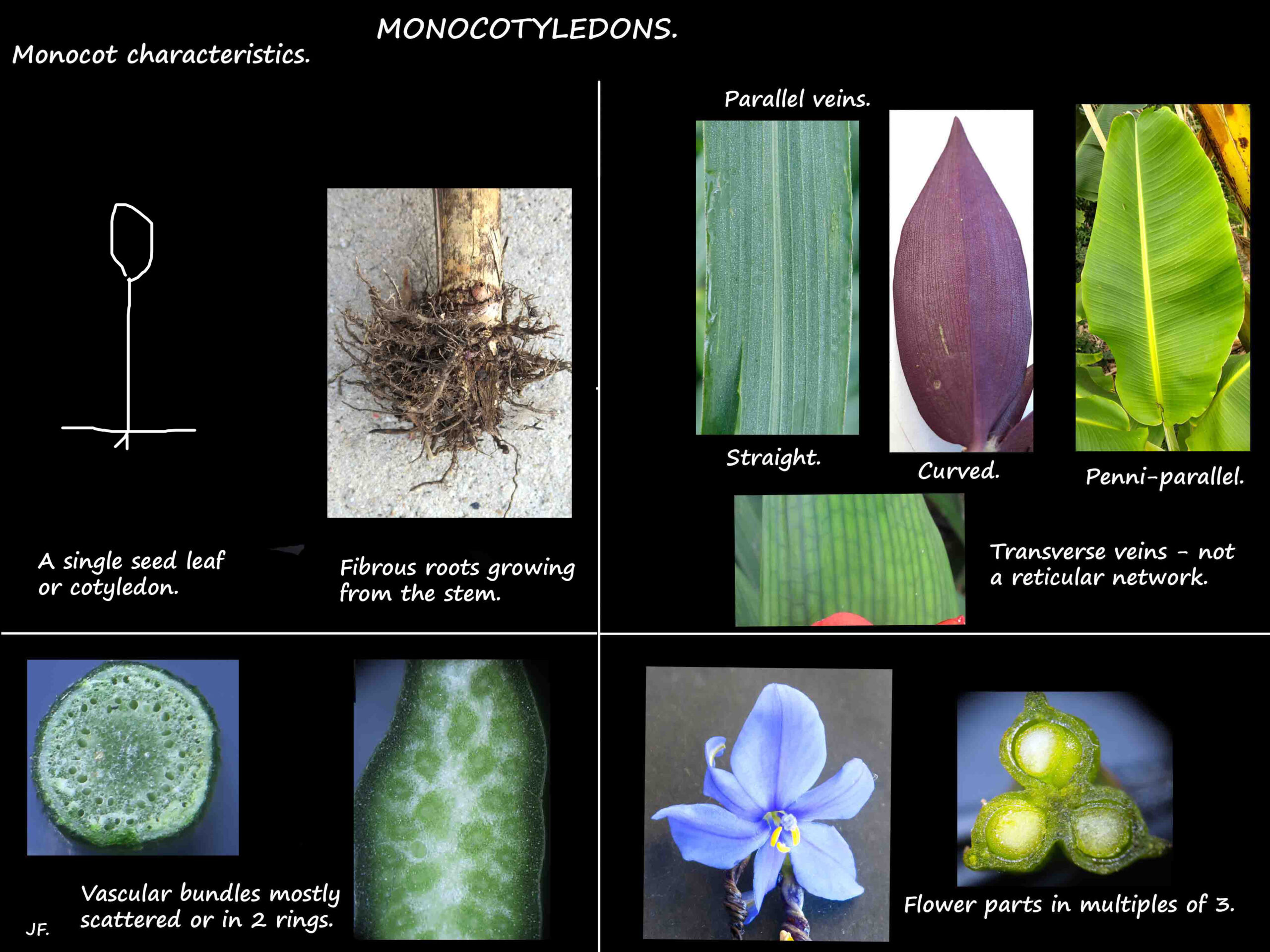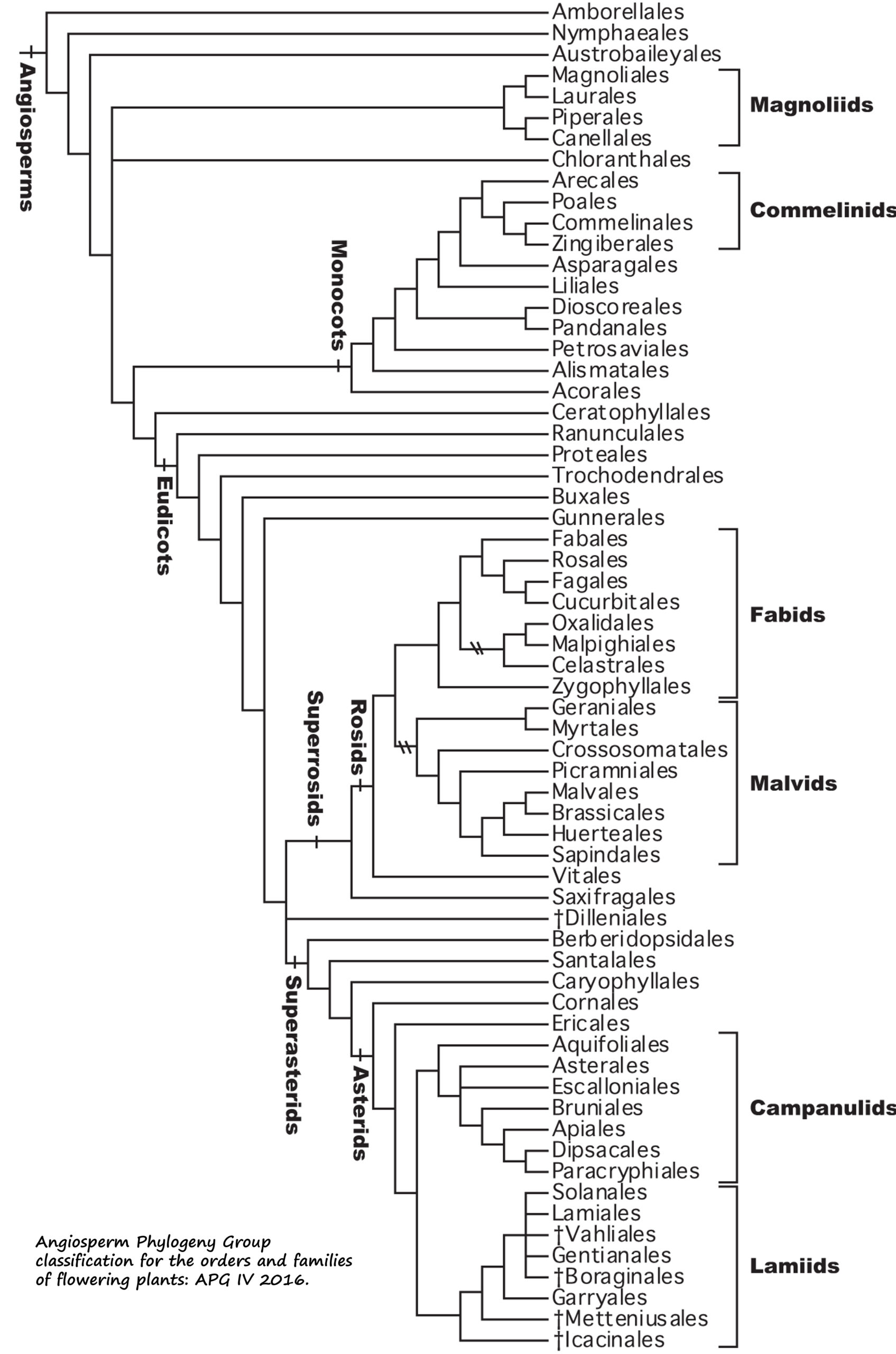About Angiosperms
Angiosperms – the flowering plants.
Flowering plants appear to have emerged between 180-140 million years ago (mya).
They have an unknown common ancestor.
They are thought to be a sister group to the gymnosperms.
Shared features of the angiosperms include:
- a perianth (sepals and petals)
- fruits with fleshy endosperm to nourish the seed.
- double fertilisation.
- ovules enclosed within an ovary,
- stamens with two pairs of pollen sacs.
The flowering plants were initially divided into groups based only on appearance.
Microscopy, chemical tests and DNA analysis are helping get a definitive classification.
The aim is to
- sort all flowering plants into groups
- each member to have the same common ancestor and
- to try and resolve the relationships between the groups.
Angiosperm Phylogeny Group’s index summarises the latest classification.
AGP4 was released in 2016 and there have been some updates to it since.
Division into dicots, monocots and eudicots has largely been abandoned.
They are still seen so a brief summary of them is given below.
Basal angiosperms.
These are the most primitive flowering plants – the first to diverge from the unknown common ancestor.
It is a small group of about 200 species in three unrelated orders.
The Amborellales were the earliest followed by the Nymphaeales and the Austrobaileyales.
The basal angiosperms have a number of features in common including:
- A perianth undifferentiated into petals and sepals (tepals).
- Carpels separate.
- Leaves alternate and spirally arranged.
- 2 seed leaves.
- Pollen grains with one aperture.
Apertures are special areas (pores and grooves) on the wall of a pollen grain that may have various functions.
The basal angiosperms make up less than 5% of all plant species.
The next separate lineage to branch off was the Chloranthales then the Magnoliid clade possibly derived from the Chloranthales.
The Magnoliids.
- They have flowers with parts in 3’s,
- leaf veins that usually branch and
- pollen with 1 aperture.
There are about 9,000 species in the Magnoliales, Piperales, Canellales and Laurales orders.
The Monocots.
The Monocots are all descended from a single unknown common ancestor.
They are closely related to the Ceratophyllales, Chloranthales and the Magnoliids but it is uncertain how.
They may have emerged before or after the Magnoliids.
There are a number of features which tie the monocots together including:
- Only 1 seed leaf or cotyledon.
- Pollen grains have only one aperture.
- Flower parts mostly in 3’s usually with a perianth of 6 tepals.
- Many fibrous roots growing from the base of the stem rather than a tap root with side branches.
- Fused carpels.
- Leaves mostly have parallel veins either straight, curved or penni-parallel (penniveined).
- Simple connections between veins, not a reticular network.
- Vascular bundles are mostly scattered or occasionally in 2 rings rather than just 1 ring.
They are a large group of 60,000 to 70,000 plants – about 23% of flowering plants.
The Ceratophylales about 6 species of aquatic plants.
The Early Eudicots.
The eudicots appeared about 125 million years ago just after the earliest or basal angiosperms.
This group have:
- A variable perianth with parts in 3’s, 4’s or undifferentiated.
- Pollen with 3 apertures.
- Separate carpels.
- Many stamens.
Orders are the Ceratophyllales, Ranunculales, Proteales, Trochodendrales and the Buxales.
They comprise less than 5% of angiosperms.
The Core Eudicots.
There are about 190,000 species which is over 70% of all angiosperms.
They show an enormous range of variation in habit, appearance, etc.
Characteristics of the group include:
- Pollen grains with 3 (or more) apertures or pores.
- 2 seed leaves.
- Flower parts in 4’s or 5’s.
- Leaf veins that usually branch.
- Flower parts can be fused to each other.
- Perianth differentiated into sepals and petals.
- Stamens with 2 pairs of pollen sacs.
The AGPIII classification lists 413 families.
Asteraceae or Compositae has around 22,750 daisy specie.
Fabaceae or Leguminosae has around 19,400 bean and pea species.
Plant index.
There is a ‘Flowering Plant Index’ on the left side menu.
It has the scientific and common names and which family plants are in.
Entries are not hyperlinked.
J.F.



